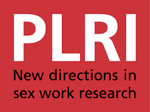Making Sex Work Safe was developed by sex workers from the early International Network of Sex Work Projects (NSWP). It was written by Paulo Longo and Cheryl Overs. It provides global perspectives on information about sex workers, analysis of law and policy and guidance about how to ensure that programmes on sex work are rights based and grounded in communities.
History
The book was first published in 1996 in partnership with Appropriate Health Resources Technologies Action Group (now called HealthLink) and it quickly became a key resource for new sex work projects despite initially being distributed only in print through conferences and mail.
Later it was posted on the internet and it was translated, adapted and updated by sex work networks in Latin America (1998), Francophone Africa (2003) and Ukraine (2006).
Who is it for?
The primary audience for the book is sex workers and other people involved in funding, planning, implementing, and evaluating the response to HIV. However from experience we know that the book is used by a broad range of civil society and human rights organizations, HIV and sexual and reproductive health agencies, governments, students and policy makers.
What’s New?
There are many reasons to revise the book now. When it was first written there were far fewer sex workers involved in HIV work, much less was known about HIV and the policy environment was very different than it is today. Since then Antiretrovirals (ARVs) have become available, there have been significant increases in mobility and shifts in responses to HIV including huge amounts of funding and increased emphasis on testing. New, biomedical prevention methods that will profoundly affect sex workers ability to protect themselves from pregnancy and diseases are around the corner.
The contents of the new version of Making Sex Work Safe will be:
- an introduction to the issues around sex work from the perspective of male, transgender and female sex workers;
- tools for understanding commercial sex, sex workers and clients;
- descriptions of policy and law that affect sex workers and sex workers responses to them;
- advice from sex workers about how to plan and implement HIV prevention and care services for male, female and transgender sex workers, their children;
- information for all stakeholders about the evidence and human rights based approaches that have successfully reduced sex workers vulnerability to HIV, STIs, poverty, human trafficking and other forms of abuse;
- guidance and tools to help sex workers and other advocates to advocate effectively at local and regional levels for rights and evidence based; and
- examples and case studies of best practices for reducing HIV, improving sexual and reproductive health and combating human rights abuses.
Can you help?
The process for gathering this information will be internet research and collecting material from the Asia Pacific Network of Sex Workers (APNSW), NSWP and PLRI members. Cheryl Overs will co-ordinate inputs and write sections of the book and Andrew Hunter will oversee collecting the information that goes into it. The project has a small budget to pay regional for NSWP members for contributions. Graphics, photos and examples of educational materials, newsletters etc. will be most welcome.
The material will be compiled and written up throughout October, November and December and the graphic design will be completed ready for loading to the NSWP website in January. The designer of the original Making Sex Work Safe, Sylvio de Oliveira will do the design. There is no budget at this stage to translate or print the book but we are confident that we or other networks can raise that later. Once re-published, Making Sex Work Safe is likely to be the first text on sex work, health and human rights consulted by huge numbers of people, just as the original was. Please think about having stories or pictures from your project, your issue or your advice included. Materials and enquiries can be sent to [email protected] or [email protected].

